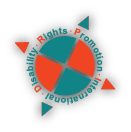Section 5: Conclusions Recommendations
The conclusions and recommendations in this section come out of and are aligned to the monitoring projects’ results. The project management committee took the draft report back to their organisations for feedback. Each organisation was asked to come up with three main recommendations that they considered realistically achievable. The following recommendations are the agreed outcomes of this analytical process.
The recommendations relate to social participation, the bureaucracy, work, getting out and about, and universal design.
Social Participation
The biggest drivers of discrimination toward disabled people are barriers to social participation. Disabled people want to participate in society realising the same citizenship rights and human rights as others. Participation is limited however, sometimes by lack of accommodations, but more often than not by attitudes borne from a lack of understanding of the everyday realities of disabled peoples’ lives.
Currently we are aware that the New Zealand government are about to embark on an awareness campaign. This will probably focus on tangible issues like work, transport and communication. However, some thought should be given to the drivers for true social participation such as friendships and other networks that are taken for granted in non-disabled people’s everyday lives.
Recommendation 1: That New Zealand undertakes an "awareness campaign" that targets all sectors of society and concerns the broader aspects of social participation, notably the attitudinal barriers that are a key driver of social exclusion.
DPOs should be full and active partners in decisions, design and delivery. There should be compulsory staff training in disability awareness, with the courses provided via DPOs.
The Bureaucracy
Disabled people reported that the major barrier for them was the bureaucracy that hinders rather than helps. As one participant said, “there's an assumption the needs of the client will be met by meeting the needs of the bureaucracy”.
From the project results we can conclude that bureaucratic expediency is often used as a rationale for disablement. People are acting in a rational manner and following the rules but the net effect of the rules is clearly discriminatory. The most obvious example of this is disabled people having to demonstrate year after year that they still have their lifelong impairments. The cumulative effect of this is that time and money is wasted proving the obvious.
Recommendation 2: A) That in partnership with DPOs, New Zealand undertakes a detailed assessment of the barriers that prevent disabled people from fully participating in society.
Recommendation 2: B) That key performance indicators are created and monitored for all public services and that DPOs and disabled people are part of a monitoring
process.
Work
The project results suggest that there is a large resource of well educated disabled people who are unable to access employment. The biggest gains to be made in this area involve changing employers’ misinformed attitudes about disabled people and to have more flexible working conditions.
Recommendation 3: That the requirement for reasonable accommodation for disabled people is enforced and those to whom it applies are made aware of their obligations.
Getting out and about
Leaving home for short or extended periods of time is an issue for disabled people. However, despite ongoing marginalisation people don’t report discrimination with respect to transport because they perceive that nothing will happen. As one disabled person involved in the project reported, “the system bashes disabled people, the system wears you down until you are ready to accept anything”.
Recommendation 4: That an industry standard (similar to the tourism industry's Qualmark) is developed. It should signal a non-disabling environment and universal design features.
Further Work
For the next two years government funding has been provided to enable DPOs to conduct disability rights monitoring on an annual basis to appraise the state of the human rights of disabled people. Annual reports of this assessment can be used to provide information for Human Rights monitoring mechanisms.
Conclusion: Addressing discrimination
Disability rights movements around the world recognise negative social attitudes as one of the major factors disabling people with impairments. The Convention recognises that negative social attitudes can prevent disabled people from participating in society as much as any physical barrier. The clear disability awareness message coming out of this project supports the argument for the disabling nature of social attitudes. (See recommendation 1)
